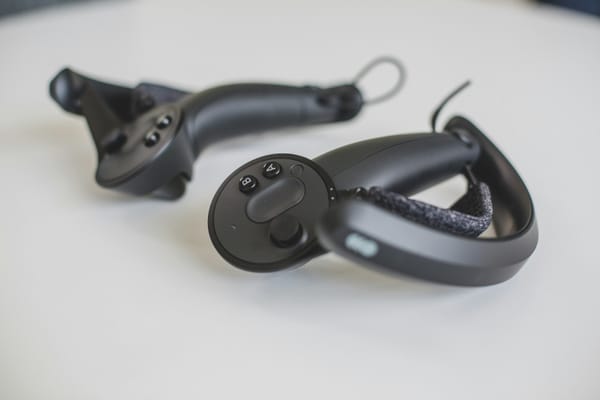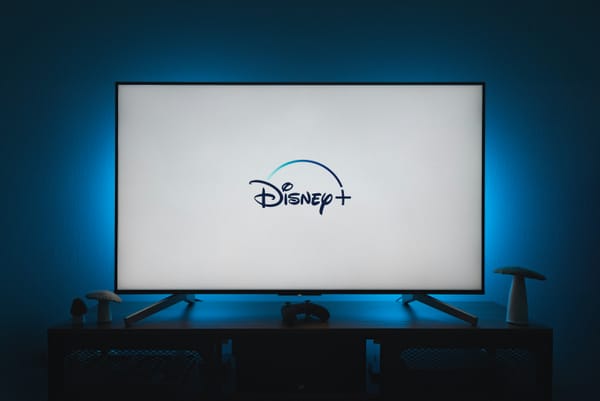Using Virtual Reality For Training Employees | Train Your Employees With VR
Enhance development with immersive virtual reality for training employees. Learn how VR technology can take your training to the next level.
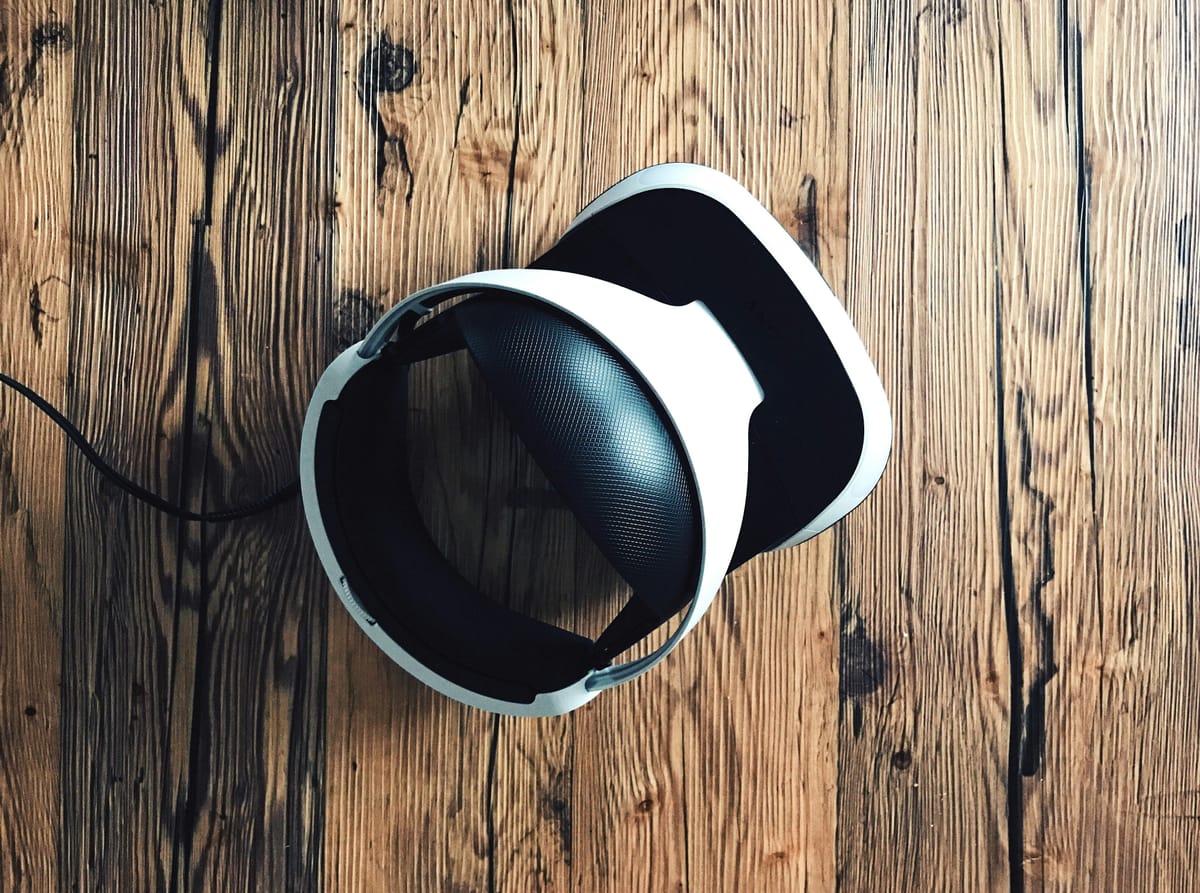
Step into the future of corporate training with Virtual Reality For Training Employees. Discover how this cutting-edge technology is revolutionizing the way companies onboard and upskill their staff in the virtual workplace. From immersive simulations to interactive scenarios, virtual reality offers a dynamic and engaging learning environment that boosts retention and performance. Dive into the world of VR training and unlock the full potential of your workforce.
Table of Contents
- What Is VR Training?
- Why Companies are Adopting Virtual Reality for Training Employees?
- Major Reasons Companies are Adopting VR for Training Employees
- Best Practices With Virtual Reality For Training Employees
- Improved Learning Outcomes With VR Training
- Costs Involved in Developing A VR Training Programme
- How to Evaluate VR Training Effectiveness
- Get The Apple Vision Pro Experience for A Fraction of The Cost With Fluid
What Is VR Training?
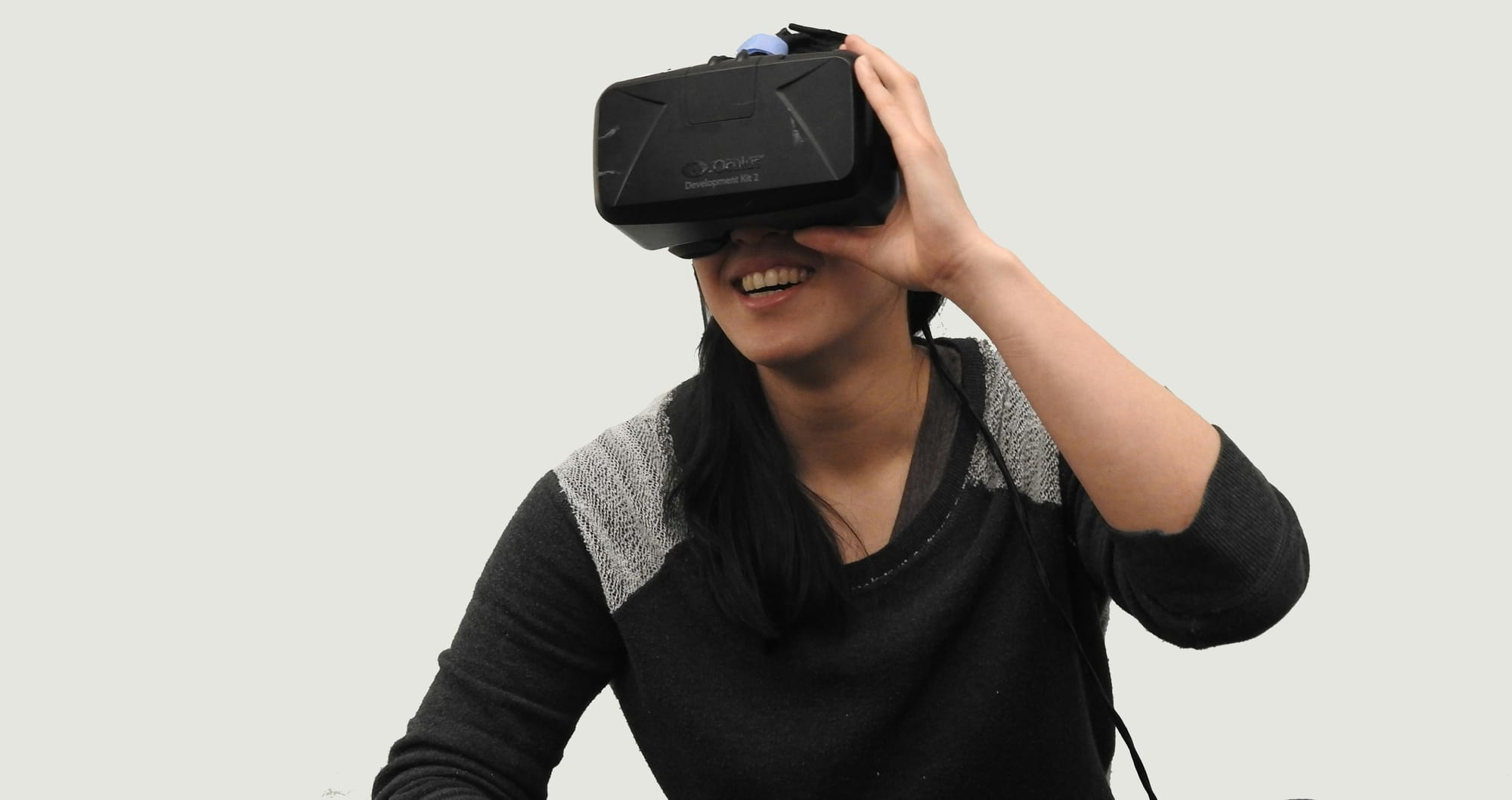
Virtual Reality (VR) training offers a transformative learning experience by immersing employees in realistic simulations of work environments. This immersive nature allows for hands-on training in a risk-free setting, enabling learners to practice skills and scenarios without real-world consequences.
The benefits of VR training are multifold, with increased retention rates being a standout advantage. Employees retain information better when they are actively engaged in experiential learning, leading to enhanced skill acquisition and improved performance in the workplace.
Key Statistics Highlighting the Effectiveness of VR Training
Statistics from a PWC report shed light on the remarkable effectiveness of VR training compared to traditional methods. Learners were found to be four times faster in acquiring new skills through VR training and reported being 3.75 times more emotionally connected to the training content.
Individuals who underwent VR training exhibited a 275% increase in confidence to apply the newly acquired skills, showcasing the tangible impact of immersive learning experiences. Learners in VR environments demonstrated four times greater focus compared to their counterparts in e-learning settings, underlining the power of VR in enhancing engagement and knowledge retention.
Applications Across Various Industries
VR training finds extensive applications across industries where replicating real-life scenarios is vital for employee development. Sectors such as defense, aerospace, and oil & gas leverage VR training to simulate dangerous work environments and procedures without compromising safety.
In highly technical fields like medicine, VR training offers a platform for practicing intricate procedures with precision, minimizing the risk of errors in real-life settings. The engineering and construction sectors benefit from VR training by optimizing performance, fostering collaboration, and enhancing overall efficiency in project workflows.
Enhanced Learning with Artificial Intelligence Integration
The integration of artificial intelligence (AI) amplifies the effectiveness of VR training by providing responsive and adaptive learning experiences. AI algorithms create dynamic scenarios tailored to individual learning needs, enhancing the acquisition of soft skills such as management, leadership, communication, and customer service. This synergy between VR and AI not only enhances the learning process but also equips employees with practical skills that are essential for professional growth and success in diverse work environments.
Creating Flexible Workspaces with Fluid on Meta Quest
Fluid allows you to create a flexible workspace in XR on the Meta Quest. With Fluid, you can place big screens anywhere in augmented reality. Fluid enables flexible workspaces and entertainment, cloud gaming, and much more. The most game-changing feature of all: Fluid allows you to create a virtual workstation with VR/AR using the Meta Quest, with virtually any screen size. You can create your own $5,000+ work setup in VR/AR, and take it wherever you’d like to.
Fluid solves remote working and remote work collaboration, long-distance relationships, remote teams, small startups with distributed co-founders, gamers who want a portable VR/AR gaming set, students, and much more. Turn your VR headset into a spatial computer for free today with Fluid. Break free from physical screens, watch content on a big screen from anywhere, get into a deep flow state by being immersed in your work, and create a flexible workspace anywhere with Fluid.
Why Companies are Adopting Virtual Reality for Training Employees?
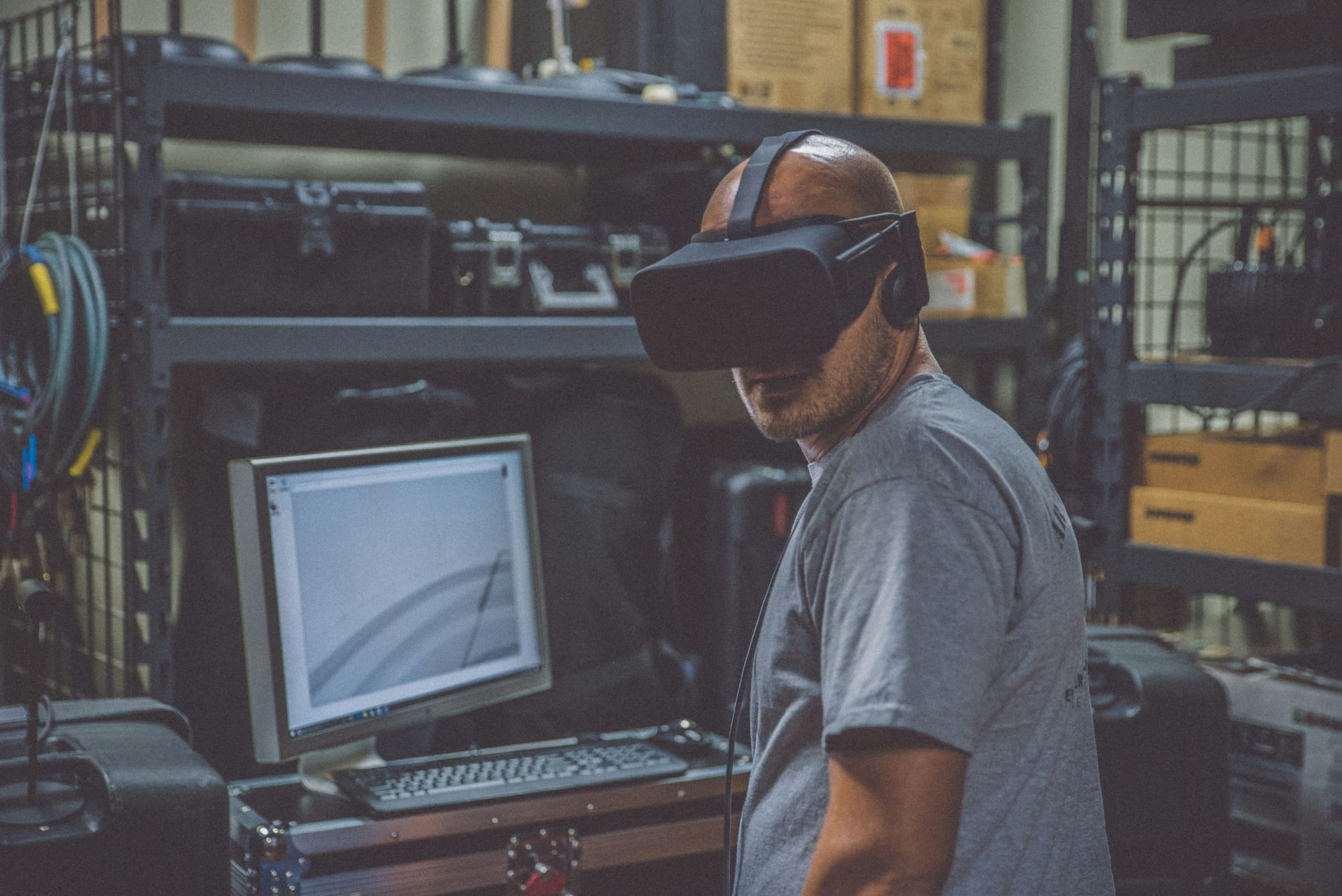
In recent years, Virtual Reality (VR) training has gained significant traction in the corporate landscape. Enterprises are increasingly turning to VR to revolutionize their employee training programs. According to a 2020 study shared on TechRepublic, a staggering 91% of enterprises are either already using VR for training or are planning to integrate it into their training initiatives. This notable statistic underscores the widespread adoption and growing popularity of VR in the corporate world.
Enhancing Employee Training Programs with VR
A study conducted by PwC shed light on the advantages of VR training compared to traditional methods. The research revealed that VR learners exhibit faster training times, enhanced confidence in applying acquired skills, improved focus during training sessions, and heightened connectivity to the material being presented. These findings highlight the effectiveness of VR in enhancing employee training programs by offering a more engaging and immersive learning experience.
Significant Benefits of VR Training
The benefits of VR training extend beyond just improved learning experiences. Studies have shown a remarkable 43% decrease in workplace injuries and a substantial 76% increase in learning effectiveness as a direct result of VR training implementation. These significant outcomes underscore the tangible advantages that VR brings to the table in terms of workplace safety and employee skill acquisition.
Driving Factors Behind VR Training Adoption
Enterprises are increasingly turning to VR training to address existing challenges within their organizations. From cost-saving measures to resolving workforce skill gaps, VR training has proven to be a valuable solution. The effectiveness of VR in solving real-world business problems is a key driver behind its rising popularity in corporate training programs.
The Role of VR Training in Employee Development
While VR training is not intended to replace traditional training methods entirely, it serves as a complementary tool to enhance learning effectiveness. Training directors have a unique opportunity to leverage VR training to solve business challenges at an executive level and elevate overall employee performance through innovative training solutions.
Unlock the Potential of VR with Fluid
Fluid allows you to create a flexible workspace in XR on the Meta Quest. With Fluid, you can place big screens anywhere in augmented reality. Fluid enables flexible workspaces, entertainment, cloud gaming, and much more. The most groundbreaking feature of all: Fluid allows you to create a virtual workstation with VR/AR using the Meta Quest, with virtually any screen size. Break free from physical screens, watch content on a big screen from anywhere, get into a deep flow state by being immersed in your work, and create a flexible workspace anywhere with Fluid.
Turn your VR headset into a spatial computer for free today with Fluid.
Major Reasons Companies are Adopting VR for Training Employees
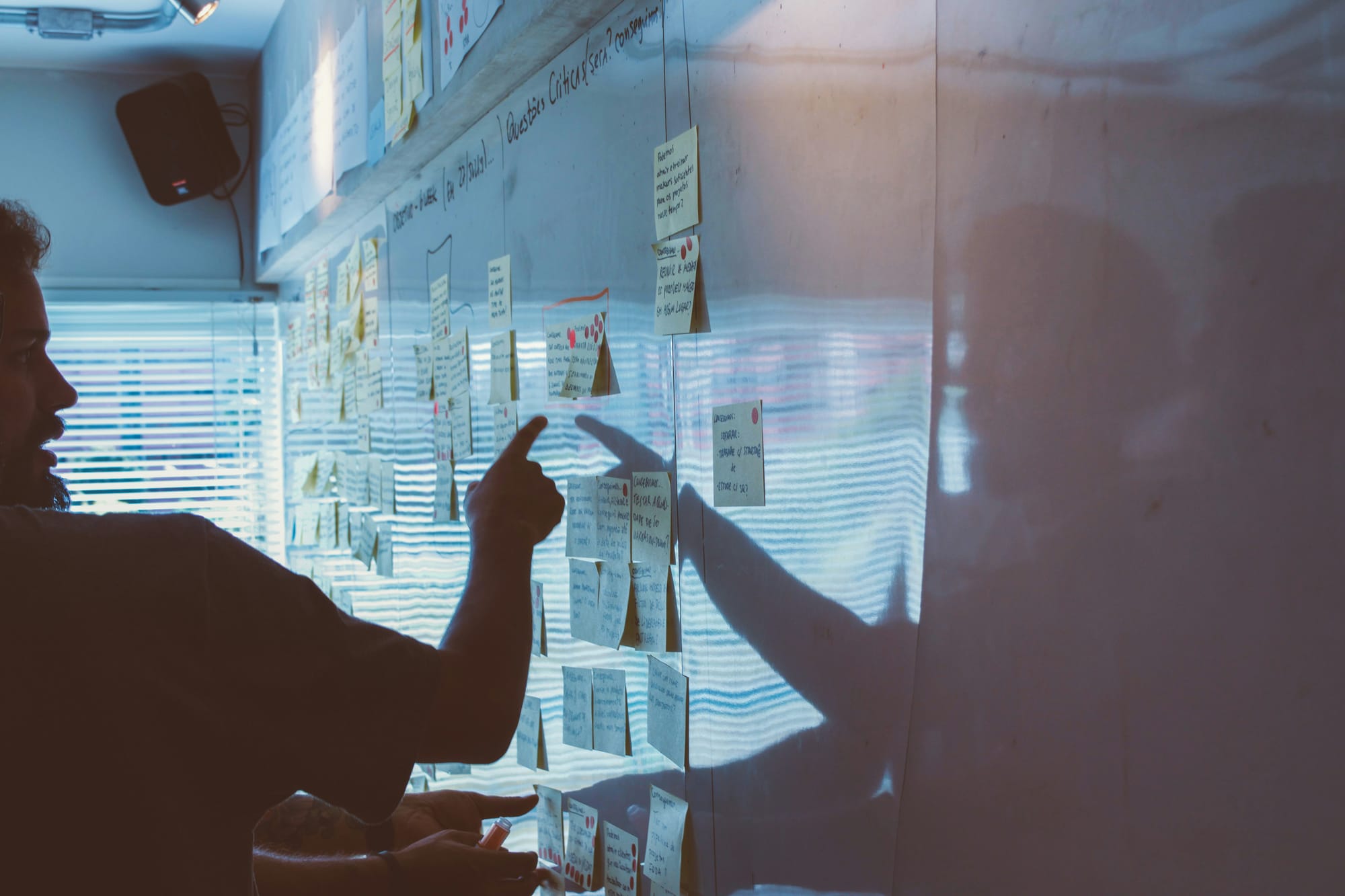
Cost Reduction: Maximize Efficiency and Minimize Costs with VR Training
Cost reduction is a primary driver for many companies adopting Virtual Reality (VR) training for their employees. By leveraging VR technology, businesses can streamline their training processes and cut down on expenses associated with traditional methods. One significant cost-saving benefit of VR training is the elimination of the need to halt production for employee training, especially when dealing with heavy machinery or equipment. This uninterrupted workflow ensures that the company's productivity remains intact while employees receive valuable training.
Cost-Saving Benefits of VR Training for Corporate Learning
VR training can also help companies save on travel expenses by providing realistic simulations of equipment interactions without the need for physical presence. This is particularly beneficial for companies with multiple locations or those requiring specialized training that is costly to conduct in person. By immersing employees in virtual scenarios, VR training ensures that learning outcomes are achieved effectively without the need for costly travel arrangements.
Achieving Cost Reductions through VR Training Implementation
For example, a manufacturing company reported a 25% reduction in training costs after implementing VR simulations for machine operations. By transitioning from traditional, in-person training to VR modules, the company saved significantly on resources and time, all while enhancing the quality of training delivered to employees. This case study underscores the tangible cost-saving potential of integrating VR training into corporate learning strategies.
Skilled Labor Gap Fill: Rapid Skill Acquisition through Immersive Training
One of the key advantages of VR training is its ability to expedite the acquisition of hard skills, enabling companies to bridge skilled labor gaps more efficiently. By creating immersive and interactive training environments, VR technology allows employees to engage with real-life scenarios and practice tasks that would typically require extensive hands-on experience.
Accelerating Skill Mastery with VR Training for Unskilled Workers
Research studies have shown that VR training can significantly reduce the time needed for unskilled workers to master complex tasks like equipment repair. Through simulated practice sessions in a safe and controlled virtual setting, employees can enhance their skills and confidence levels more rapidly than through traditional training methods.
Evidencing Effectiveness: Improved Skill Acquisition Rates with VR Training
In a survey conducted across multiple industries, 85% of respondents reported a noticeable improvement in skill acquisition rates among employees who underwent VR training programs. This data highlights the effectiveness of VR in enhancing the learning curve for new hires and upskilling existing employees, ultimately helping companies meet their workforce's skill requirements more swiftly and effectively.
Related Reading
- Vr Workplace
- Augmented Reality In The Workplace
- Vr Work From Home
- Vr Training
- Vr Design
- Vr Programs
- Vr In Business
- Vr Marketing
- Vr Conferencing
- Vr Meetings
- Virtual Reality Business Applications
Best Practices With Virtual Reality For Training Employees
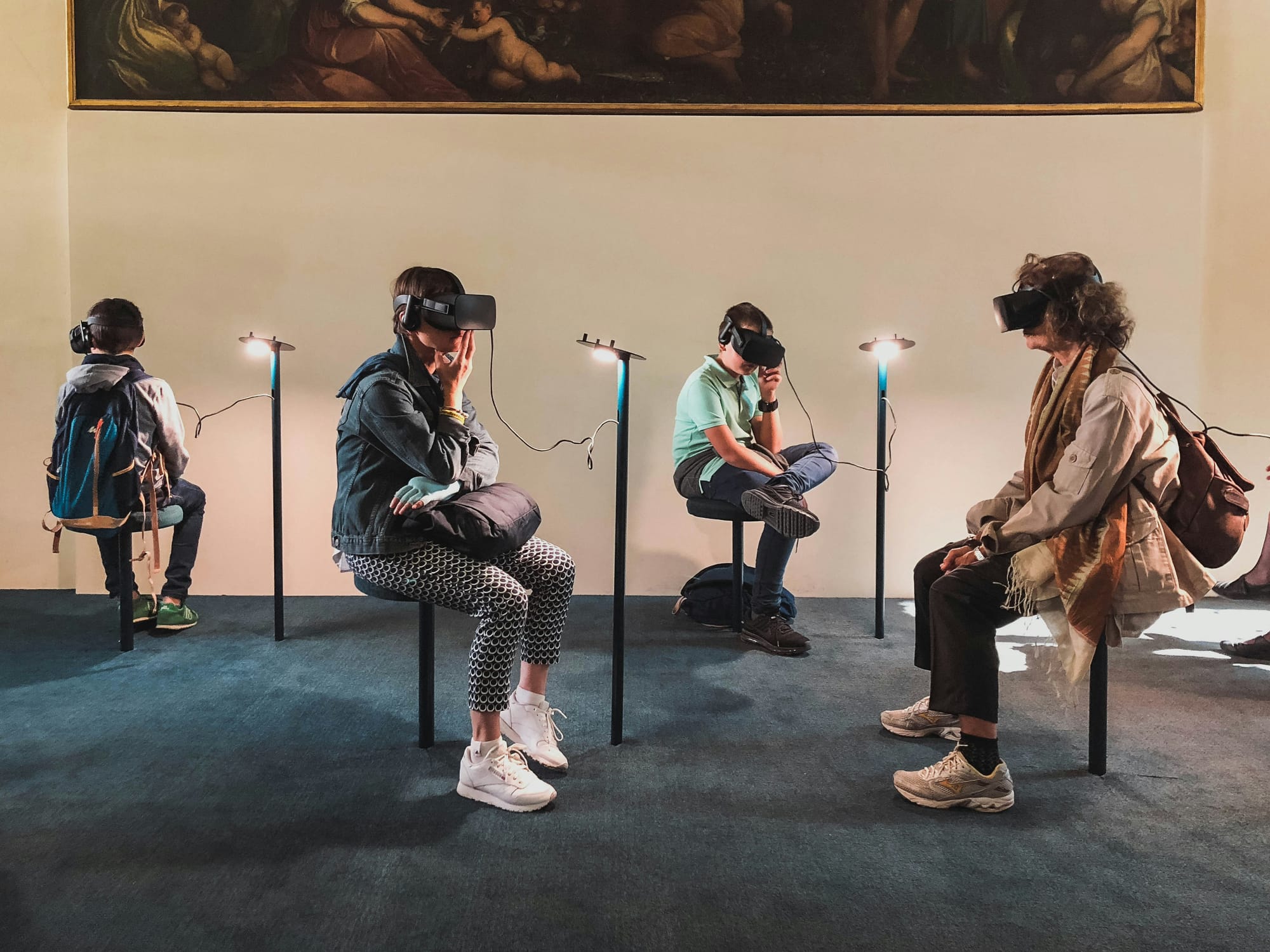
Incorporating the spacing effect through repetition-style learning at spaced intervals can significantly enhance memory retention and skill acquisition in VR training initiatives. Research has shown that distributing practice over time leads to better long-term retention compared to massed practice. By leveraging VR technology to schedule training sessions at strategic intervals, employees can reinforce their learning over time, leading to improved retention and mastery of skills.
Embracing Inclusive Training with VR for Remote Employees
Virtual Reality training offers a cost-effective solution for accommodating remote employees from diverse geographical locations. By leveraging VR technology, companies can provide standardized onboarding processes and facilitate training for employees located across the globe without incurring travel expenses. This inclusive approach not only promotes accessibility but also ensures consistency in training delivery, especially when subject matter experts are involved.
Elevating Engagement Through Gamified VR Training
Integrating gaming elements into VR training can significantly increase engagement and motivation among employees. By incorporating gamification techniques such as point systems and avatar-based training programs, companies can create immersive and interactive training experiences that captivate learners. Successful examples of gamified VR training initiatives have shown a positive impact on employee participation and learning outcomes, making training sessions more enjoyable and effective.
Harnessing Real-Time Feedback in VR Training
Virtual Reality technology enables real-time monitoring and recording of training sessions, allowing for timely and detailed feedback to trainees. By providing consistent and objective feedback, employees can track their performance and analyze their actions for self-improvement. This feedback loop not only enhances skill development but also fosters a culture of continuous learning and improvement within the organization.
Empowering Individual Accountability in VR Training
Encouraging employee autonomy and accountability through self-directed training sessions in VR can drive motivation and skill improvement. By establishing clear training goals and expectations, companies empower employees to take control of their own learning journey. Promoting individual responsibility in VR training not only enhances engagement but also encourages a sense of ownership and personal growth among employees.
Infusing Fun and Excitement into VR Training Experiences
By incorporating elements of fun and excitement into VR training, companies can enhance engagement and retention among employees. Maintaining a positive and interactive learning environment helps prevent boredom and increases employee interest and enthusiasm in training sessions. Creative and engaging VR training experiences not only make learning more enjoyable but also contribute to a more effective and memorable training experience for employees.
Fluid's XR Solution for Flexible Productivity
Fluid allows you to create a flexible workspace in XR on the Meta Quest. With Fluid, you can place big screens anywhere in augmented reality. Fluid enables flexible workspaces and entertainment, cloud gaming, and much more. The most game changing feature of all: Fluid allows you to create a virtual workstation with VR/AR using the Meta Quest, with virtually any screen size. You can create your own $5,000+ work setup in VR/AR, and take it wherever you’d like to.
Fluid solves remote working and remote work collaboration, long-distance relationships, remote teams, small startups with distributed cofounders, gamers that want a portable VR/AR gaming set, students, and much more. Turn your VR headset into a spatial computer for free today with Fluid. Break free from physical screens, watch content on a big screen from anywhere, get into a deep flow state by being immersed in your work, and create a flexible workspace anywhere with Fluid.
Related Reading
- Virtual Reality In Healthcare
- Virtual Reality In The Classroom
- Virtual Reality In Architecture
- Virtual Reality Therapy
- Teams Vr
- Working In Vr
- Vr Collaboration
- Vr Educational Apps
- Vr Data Visualization
- Virtual Reality Presentation
- Vr Prototyping
- Enterprise Virtual Reality
- Immersed Vs Virtual Desktop
- Vr Productivity Apps
- Benefits Of Virtual Reality In Business
Improved Learning Outcomes With VR Training

VR training allows employees to learn through practical experience, resulting in a 76% higher effectiveness rate compared to traditional methods. This means that learners can grasp concepts faster and more efficiently, ultimately saving time and resources.
Increased Retention
Experiential learning with VR has been shown to enhance learning quality and retention by 70-90%. By immersing employees in realistic scenarios, VR training helps solidify knowledge and skills, leading to better long-term retention and application in real-world situations.
Safe Learning Environment
With VR, employees can train in a safe and controlled virtual world where the repercussions of mistakes are minimal. This provides a risk-free environment for learners to make errors, learn from them, and improve without any real-world consequences.
Bridging Theory and Practice
One of the key advantages of VR training is its ability to bridge the gap between theoretical knowledge and practical application. By simulating real-life scenarios, employees can immediately apply what they've learned in a hands-on environment, reinforcing their understanding and skill development.
Increased Engagement Levels
VR learners have reported feeling 3.75 times more emotionally connected to the content compared to traditional classroom methods. This heightened sense of engagement leads to improved focus, motivation, and overall participation in the training, resulting in a more immersive and effective learning experience.
Improved Confidence
Completing VR training has been linked to a 20% increase in confidence levels among employees. By gaining hands-on experience in a virtual environment, learners can practice and refine their skills, ultimately boosting their self-assurance in performing tasks competently.
Efficiency
Learners in VR environments have been shown to complete their training four times faster than those in traditional classroom settings. The immersive and interactive nature of VR training enables employees to progress through material more quickly, leading to a more efficient and streamlined learning process.
Fluid's XR Workspace Solution for Meta Quest
Fluid allows you to create a flexible workspace in XR on the Meta Quest. With Fluid, you can place big screens anywhere in augmented reality. Fluid enables flexible workspaces and entertainment, cloud gaming, and much more. The most game-changing feature of all: Fluid allows you to create a virtual workstation with VR/AR using the Meta Quest, with virtually any screen size. You can create your own $5,000+ work setup in VR/AR, and take it wherever you’d like to.
Fluid solves remote working and remote work collaboration, long-distance relationships, remote teams, small startups with distributed cofounders, gamers that want a portable VR/AR gaming set, students, and much more. Turn your VR headset into a spatial computer for free today with Fluid. Break free from physical screens, watch content on a big screen from anywhere, get into a deep flow state by being immersed in your work, and create a flexible workspace anywhere with Fluid.
Costs Involved in Developing A VR Training Programme

When assessing the effectiveness of VR training for employees, it is crucial to identify key performance metrics that provide tangible insights into the impact of the training program. Companies that have successfully implemented VR training have focused on metrics such as knowledge retention, skills improvement, employee confidence, and overall performance enhancement.
By tracking these metrics, organizations can gain a comprehensive understanding of the effectiveness of their VR training initiatives and make informed decisions to optimize future training programs.
Reducing Training Time with VR
One of the significant advantages of using VR for employee training is its ability to reduce training time significantly. Traditional training methods often require extensive periods to convey information and skills to employees.
VR training allows employees to immerse themselves in realistic work scenarios, enabling them to learn and practice in a more efficient and engaging manner. Companies that have adopted VR training have observed a notable decrease in training time while maintaining or even improving the quality of training outcomes.
Immersing Employees in Real Work Situations
Immersive learning through VR technology brings a unique dimension to employee training by simulating real work situations. By placing employees in virtual environments that replicate their actual work settings, organizations can enhance learner engagement, preparedness, knowledge retention, and confidence.
Through realistic scenarios and interactive experiences, employees can develop skills, make decisions, and handle challenges in a safe yet authentic setting. Companies that prioritize immersing employees in real work situations through VR have reported higher levels of engagement and proficiency among their workforce.
Measuring VR Training Effectiveness: Company Examples
Several companies have successfully leveraged VR training for their employees, each with specific metrics to measure the program's effectiveness:
1. Walmart
Utilized VR training to simulate real-life scenarios for employees, focusing on metrics such as knowledge retention, customer satisfaction ratings, and employee confidence levels.
2. Verizon
Implemented VR training to enhance employee skills and performance, measuring metrics like task completion time, error rates, and employee feedback on training effectiveness.
3. Fidelity Investments
Integrated VR simulations to improve employee decision-making and preparedness, tracking metrics such as critical thinking skills, risk management proficiency, and investment performance.
By incorporating these key performance metrics and real-world examples of successful VR training implementations, organizations can maximize the effectiveness of their training programs and empower employees to excel in their roles.
How to Evaluate VR Training Effectiveness

When delving into the realm of VR training for employees, one of the primary considerations is the upfront investment required. Hardware costs encompass a significant portion of this initial outlay. From the essential VR headsets to controllers and any additional accessories necessary for training purposes, the expenses can add up. Brands, models, and features play a pivotal role in determining the prices of VR hardware. High-end options like the Oculus Rift S or HTC Vive Pro come with a heftier price tag compared to standalone headsets like the Oculus Quest.
Scalability Challenges and Solutions in VR Training
The scalability of VR training impacts the overall hardware cost. Implementing VR training across a larger business may necessitate purchasing multiple sets of equipment, further driving up expenses. Despite this, the good news is that the cost of VR hardware has been gradually decreasing over time, making it more accessible for businesses.
For example, the Oculus Quest 2 provides high-quality VR experiences at a relatively lower price point than its predecessors. This initial investment in hardware eventually pays off in the long run by curbing expenses linked to traditional training methods such as travel, accommodation, and venue rental.
Upfront Investment Required for VR Training: Software Costs
Apart from hardware expenses, software costs are a crucial component of the upfront investment for VR training. These costs encompass acquiring or subscribing to VR development platforms, authoring tools, and applications necessary for crafting and delivering training content. The complexity and customization level of VR training programs significantly influence software expenses. Advanced features such as realistic 3D modeling, interactive simulations, and immersive environments may require premium software solutions, elevating overall costs.
Selecting VR Software Solutions
Businesses have the option to choose between off-the-shelf VR software packages or opt for custom software development tailored to their specific training needs. Off-the-shelf software typically provides cost-effective solutions with pre-built templates and functionalities, while custom development offers greater flexibility and customization options.
In addition to the initial software acquisition costs, ongoing expenses like software updates, maintenance, and user licenses need to be factored in. Annual platform fees and subscription models may apply depending on the chosen VR software provider. Integration with existing HR systems and compatibility with other enterprise software solutions may also incur additional costs for customization and technical support.
Upfront Investment Required for VR Training: Course Planning and Content Development
Developing VR training courses involves meticulous planning, designing, and creating educational content that aligns with the organization's learning objectives and training goals. Resource allocation is indispensable for defining course aims and objectives, structuring learning modules, designing interactive exercises, and establishing desired learning outcomes. Businesses can either opt for in-house course development utilizing internal subject matter experts and instructional designers or engage external training providers and VR content developers for specialized expertise.
Ensuring VR Training Effectiveness
Regular review and revision of VR training content are imperative to ensure accuracy, relevance, and effectiveness. Budget considerations should encompass ongoing content updates, maintenance, and quality assurance processes. Investing in employee training and development programs showcases a commitment to continuous learning and skill enhancement, thereby enhancing employee performance, job satisfaction, and organizational success.
Fluid's XR Workspace Revolution
Fluid allows you to create a flexible workspace in XR on the Meta Quest. With Fluid, you can place big screens anywhere in augmented reality. Fluid enables flexible workspaces and entertainment, cloud gaming, and much more. The most game-changing feature of all: Fluid allows you to create a virtual workstation with VR/AR using the Meta Quest, with virtually any screen size. You can create your own $5,000+ work setup in VR/AR, and take it wherever you’d like to.
Fluid solves remote working and remote work collaboration, long-distance relationships, remote teams, small startups with distributed co-founders, gamers who want a portable VR/AR gaming set, students, and much more. Turn your VR headset into a spatial computer for free today with Fluid. Break free from physical screens, watch content on a big screen from anywhere, get into a deep flow state by being immersed in your work, and create a flexible workspace anywhere with Fluid.
Related Reading
Get The Apple Vision Pro Experience for A Fraction of The Cost With Fluid
Fluid for Meta Quest is a groundbreaking tool that revolutionizes the way we work and interact in virtual reality (VR) and augmented reality (AR). By allowing users to create a flexible workspace with the Meta Quest, Fluid opens up a world of possibilities for remote working, collaboration, entertainment, and more.
Creating Virtual Workstations with Fluid
One of the most impressive features of Fluid is its ability to create virtual workstations in VR/AR using the Meta Quest. This means that users can set up their own personalized work setup with screens of any size, without being constrained by physical limitations. Whether you need a multi-screen setup for complex tasks or a single large screen for immersive work, Fluid enables you to customize your virtual workspace to suit your needs.
Enhancing Remote Working and Collaboration
Fluid is a game-changer for remote working and collaboration, as it allows users to break free from physical screens and create a flexible workspace anywhere. By immersing yourself in a virtual workstation, you can enhance productivity, focus, and creativity while working remotely. Whether you are part of a remote team, a small startup with distributed founders, or in a long-distance relationship, Fluid makes it easier to connect and collaborate effectively in a virtual environment.
Empowering Entertainment and Cloud Gaming
Beyond work, Fluid also opens up new possibilities for entertainment, cloud gaming, and more. With the ability to place big screens anywhere in AR, users can enjoy a truly immersive gaming experience or watch content on a large virtual screen from anywhere. Whether you are a gamer looking for a portable VR/AR gaming setup or a student seeking a more engaging way to learn, Fluid offers endless opportunities for entertainment and exploration.
Experience the Future of VR/AR with Fluid
Fluid for Meta Quest is a game-changing tool that transforms your VR headset into a spatial computer for free. By enabling users to create virtual workstations, collaborate remotely, and enjoy entertainment in a whole new way, Fluid unlocks a new level of flexibility and creativity in the world of VR/AR.
Say goodbye to physical screens and hello to a more immersive, flexible workspace with Fluid.
